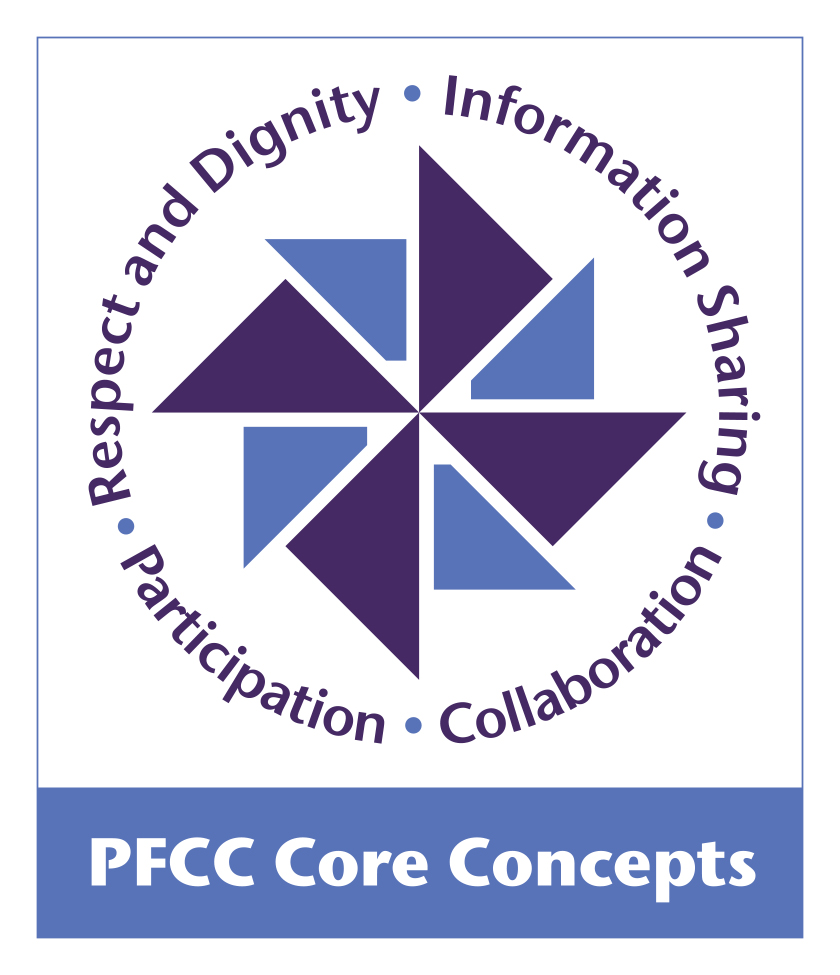Patient- and family-centered care is working "with" patients and families, rather than just doing "to" or "for" them.
Patient- and family-centered care is an approach to the planning, delivery, and evaluation of health care that is grounded in mutually beneficial partnerships among health care providers, patients, and families. It redefines the relationships in health care by placing an emphasis on collaborating with people of all ages, at all levels of care, and in all health care settings. In patient- and family-centered care, patients and families define their “family” and determine how they will participate in care and decision-making. A key goal is to promote the health and well-being of individuals and families and to maintain their control.
This perspective is based on the recognition that patients and families are essential allies for quality and safety—not only in direct care interactions, but also in quality improvement, safety initiatives, education of health professionals, research, facility design, and policy development.
Patient- and family-centered care leads to better health outcomes, improved patient and family experience of care, better clinician and staff satisfaction, and wiser allocation of resources.
Core Concepts of Patient- and Family-Centered Care
- Respect and Dignity. Health care practitioners listen to and honor patient and family perspectives and choices. Patient and family knowledge, values, beliefs and cultural backgrounds are incorporated into the planning and delivery of care.
- Information Sharing. Health care practitioners communicate and share complete and unbiased information with patients and families in ways that are affirming and useful. Patients and families receive timely, complete and accurate information in order to effectively participate in care and decision-making.
- Participation. Patients and families are encouraged and supported in participating in care and decision-making at the level they choose.
- Collaboration. Patients, families, health care practitioners, and health care leaders collaborate in policy and program development, implementation, and evaluation; in facility design; in professional education; and in research; as well as in the delivery of care.
Adapted from: Johnson, B. H. & Abraham, M. R. (2012). Partnering with Patients, Residents, and Families: A Resource for Leaders of Hospitals, Ambulatory Care Settings, and Long-Term Care Communities. Bethesda, MD: Institute for Patient- and Family-Centered Care.
Core Concepts Logos
As part of IPFCC’s 30th Anniversary Celebration, we are excited to partner and support our community in various ways. To highlight the significance of PFCC Core Concepts, we are sharing two new graphics for your organization to use. You can download the high-resolution files below to use on your website or in materials. If used, please provide credit to Institute for Patient- and Family-Centered Care®: www.ipfcc.org. Also, we'd love to hear from you about how you use the core concept logos. Feel free to share by emailing institute@ipfcc.org.
Patient- and Family-Centered Care: Partnerships for Quality and Safety
This Video and Discussion Guide were developed by IPFCC in partnership with the American Hospital Association (13:42 min) in 2004.

